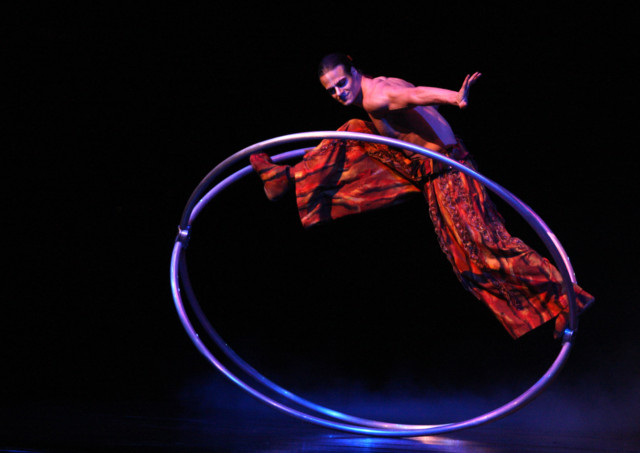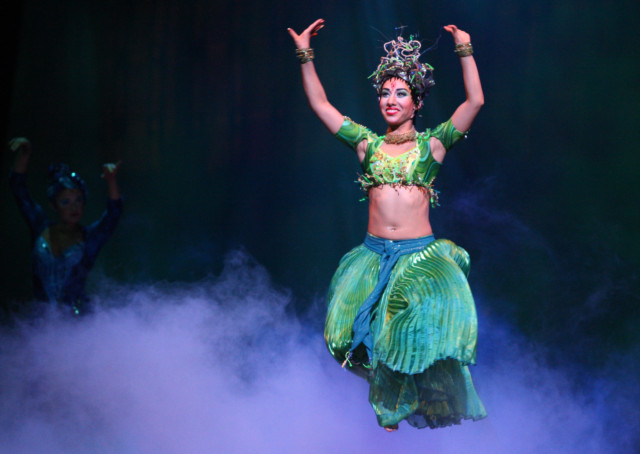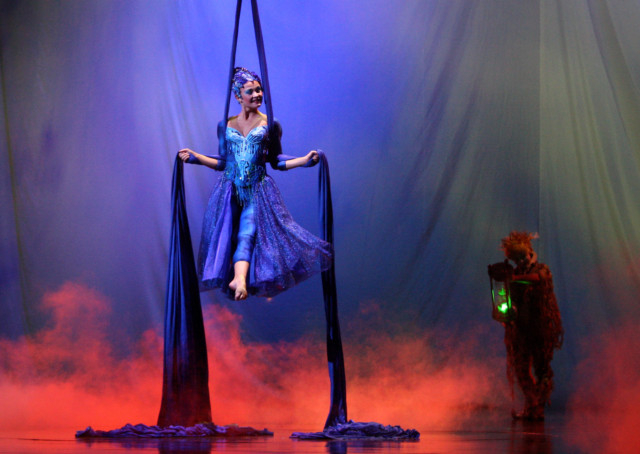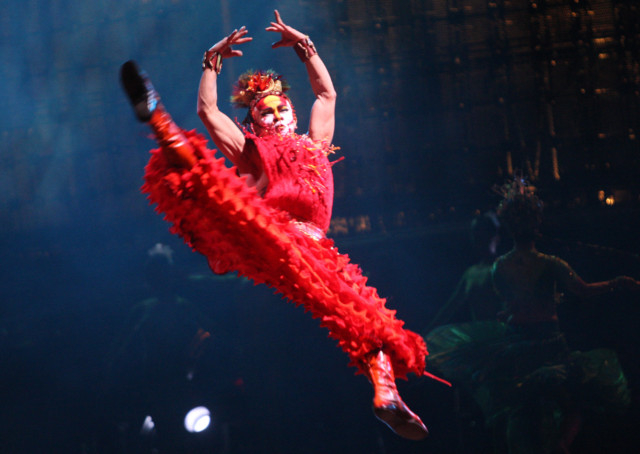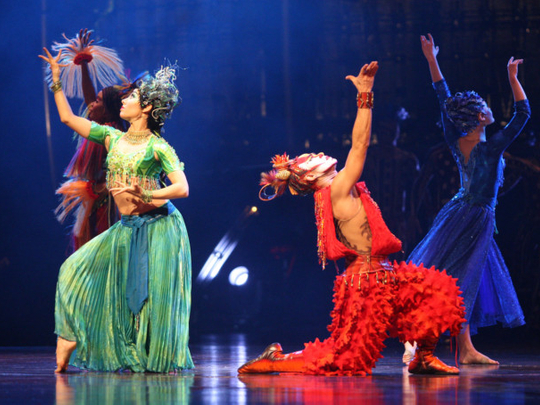
The circus is in town. But it’s a different kind of circus that sans the animals and with humans walking walls. After its last sold-out shows in the UAE, famed circus company Cirque du Soleil is back, this time with its production Dralion.
Following its debut in 1999, the show was performed under Cirque’s signature big top for eleven years before being restaged for arenas.
Featuring a fusion of a 3,000 year old Chinese acrobatic acts with Cirque du Soleil’s avant garde style, Dralion, as the name suggests, is a marriage of East and West: the dragon from the East and the lion of the West.
Exploring the quest for harmony between humans and nature, the four main elements take on a human form with air represented by blue, water by green, fire by red and earth by ochre.
tabloid! took a tour backstage to explore how the entire production comes together:
• Twelve hours to set up the stage compared to 10 days for the Big Top. It takes two and a half hours to tear the stage down.
• The circus travels with 18 semi trucks.
• Around 100 people make up the Dralion travelling team of which 54 are actors, the cast exclusively for Dralion.
• The touring circus has 17 different nationalities. Twenty six of the 54 actors are from China.
• The band leader, Stephen Poulin has been with Dralion since 1999 and has never missed a performance that’s over 1,400 shows. The band consists of six people.
• The wall is 26 feet high and 60 feet wide.
• Dralion has close to 1,500 costume pieces including shoes, hats and accessories.
• The tour travels with six washing machines and dryers because most costume pieces are machine washable and then hung to dry.
• Materials that might be considered unusual were used in creating costumes and accessories: horse hair, raffia, metal, window screen, emu feathers, crystals, styrofoam, plastic, bubble wrap, fun fur, springs and an array of hardware items.
• Over three hundred pairs of shoes are cleaned and painted by hand every week.
• A gym travels with the set: the cast use it before and during a show.
• The Dralion costume weighs around 18.14 kilograms.
• When an artist joins Cirque du Soleil, they undergo training for four to six months – this includes make-up application as the cast do their own hair and make-up. It takes them an hour on average to do their make-up compared to 12 hours when they first start out.
Acts to watch out for:
• Aerial Hoop: Suspended from a hoop high above the stage, the artist presents an evocative choreography in which the hoop and body become one in a dance of acrobatic precision.
• Trampoline: Watching the artists practice we were in awe at how they defied the laws of gravity, bouncing off trampolines using it as both a diving board and landing pad. They cascade perilously through the air performing spectacular stunts at a dizzying pace.
• Chairs: Here the artist stacks chairs to form a tower and performs a balancing act that displays the human body at its peak condition.
• Skipping ropes: We are all familiar with this child’s game. In Dralion it takes on a new dimension with the artists displaying their acrobatic prowess performing flips, making pyramids and even forming a human column all while jumping rope.
• Bamboo Poles: So how many of you out there can balance a decorative pole you know keep it in flight overhead while also performing acrobatic feats on the ground? I can balance a lime on a spoon — barely.
---
Interview with Michael Veilleux, Company Manager, Cirque du Soleil
Q: What kind of research goes into such a production?
A: At the foremost you need a great team. Since we have many productions around the world, they’ll use the previous research that was done – they’ll start with that, validate it. We have something called City Reports, they go through that and assess what went well and what did not and they build on that.
Q: The last time Cirque du Soleil was in town, they had to extend it by a month. Is there a chance Dralion will be extended?
A: It wouldn’t be possible this time around because of the deadlines and commitments we have right after this. We would have come back later in the year.
Q: How does the casting process for Cirque work?
A: We have casting agents who go around the world. They publish in the local newspaper that Cirque du Soleil is having a casting call and are looking for people with these skills. Or they’ll go to world competitions, exhibitions and others and scout people to work for us. With multimedia and social media, we also have people sending in their video clips.
Q: There were plans for a permanent Cirque du soleil feature at Palm Jumeirah. Are plans still on for that?
A: Plans have been shelved but that does not preclude future opportunities. Dubai is back in business and that’s good for us. Cirque du Soleil and Dubai have a lot of commonalities – we are both multicultural organizations. In that sense, it will be great to have one here.
Q: Cirque du Soleil has revamped the idea of a circus. How did you achieve this?
A: Well we began with the notion that you do not need animals in a circus, the human body is fascinating enough. It’s been a great adventure – each time someone comes to our show they can see all these insane things the human body can do.
*Cirque du Soleil’s Dralion runs until February 16 at the Dubai World Trade Centre. Tickets priced at Dh295 (Silver), Dh495 (Gold), Dh 1,295 (Platinum) and Dh2,295 (Royal) are available at platinumlist.ae or call 056 675 2181.



